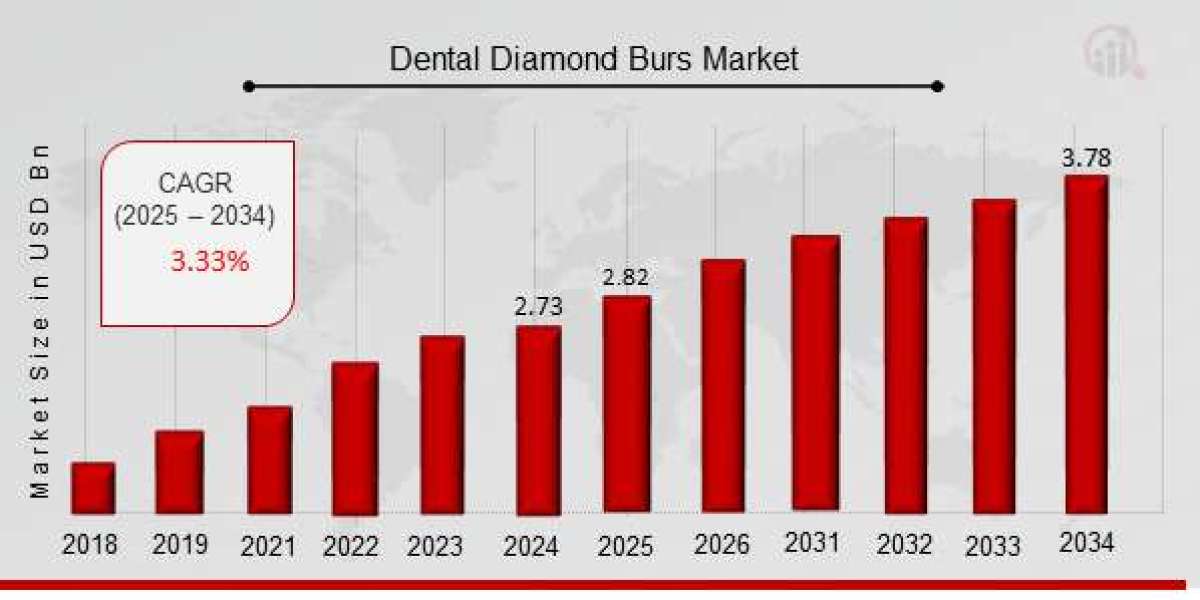The Cutting Edge: How Dental Diamond Burs Are Evolving in 2025
Dental diamond burs have long been essential tools for dental professionals, providing the precision and efficiency needed to carry out a range of dental procedures. From tooth preparation to restorative work, diamond burs have earned their reputation as the go-to tool for high-quality, accurate cuts. As we step into 2025, the evolution of dental diamond burs is paving the way for even greater advancements in the dental industry. Whether it’s through technological innovations, enhanced performance, or increased sustainability, dental diamond burs are undergoing a transformation that will change the way dental professionals approach their daily tasks.
1. Advancements in Diamond Bur Technology
One of the most significant shifts in dental diamond burs is the incorporation of cutting-edge technology. Traditional dental diamond burs featured a simpler design, but with recent innovations, manufacturers have developed multi-layer diamond coating to improve durability, cutting efficiency, and performance. These new diamond burs are designed with a unique coating that provides longer-lasting sharpness and enhanced cutting capabilities.
In 2025, we’re also seeing the rise of laser-treated diamond burs, which are manufactured using high-precision laser techniques. This technology ensures more uniform diamond particles on the bur’s surface, resulting in smoother cuts and reduced heat generation during procedures. As a result, dental professionals can perform procedures with even greater accuracy, reducing the risk of post-operative complications such as sensitivity or tissue damage.
Additionally, some modern diamond burs come equipped with anti-backlash designs that further minimize the risk of uneven cuts. These advancements are making it easier for dentists to perform complex procedures with less effort, less risk, and more patient satisfaction.
2. Increased Precision and Control for Dentists
Precision and control are paramount when working on dental procedures. In 2025, diamond burs are being designed with finer grit variations, giving dental professionals more control over the depth of cuts. With innovations like extra-fine, fine, and medium-fine grit options, dentists can choose the ideal bur for specific tasks, whether it’s preparing a tooth for a crown or reshaping dental fillings.
Ergonomically designed burs are also making a significant difference in terms of comfort and control. In the past, dental burs could cause hand fatigue after long procedures. Today’s burs are designed with lighter materials and ergonomic handles that reduce strain on the dental practitioner’s hands and wrists. This improvement enhances the dentist's ability to focus on precision while reducing the physical toll of their work.
The combination of advanced materials and ergonomic designs has led to burs that are easier to use for longer periods while maintaining consistent results. Dentists now have more confidence in their ability to provide high-quality results with minimal effort.
3. Enhanced Durability for Longer-Lasting Use
A common issue with dental burs is wear and tear over time, which often leads to reduced cutting efficiency and frequent replacements. However, in 2025, durability improvements are allowing diamond burs to last much longer without compromising performance. The introduction of higher-grade diamonds and better bonding techniques is making diamond burs more resistant to breakage and wear. This enhancement means fewer replacements and longer intervals between purchases, helping practices reduce costs in the long term.
Another critical factor contributing to increased durability is the development of advanced bonding technologies. These innovations allow diamond particles to stay securely attached to the bur’s core material, ensuring even cutting across the surface throughout the bur’s lifespan. As a result, dental professionals can rely on their burs to maintain consistent performance for extended periods.
4. Sustainable Practices and Eco-Friendly Materials
As sustainability becomes an ever-increasing concern across all industries, the dental sector is also adapting. In 2025, many manufacturers of dental diamond burs are adopting eco-friendly materials and manufacturing processes. For example, some companies are transitioning to recyclable packaging or using more sustainable raw materials for their burs.
The push for sustainability extends to the disposability of diamond burs. Some dental practices are moving towards single-use burs to reduce cross-contamination risks and improve hygiene standards. While this trend has raised concerns regarding waste, manufacturers are responding by developing biodegradable packaging and environmentally friendly disposal methods. By using materials that decompose more easily or are reusable, these innovations help reduce the environmental impact of single-use products.
Moreover, advancements in material sourcing are enabling manufacturers to use diamonds that are ethically sourced, ensuring that both dental professionals and patients can feel confident about the sustainability of their tools.
5. Customized and Specialized Burs for Specific Procedures
One of the most exciting trends in the dental diamond burs market is the increasing customization of tools. Dental professionals have long used standardized burs for a wide range of procedures, but as practices become more specialized, so do the tools. In 2025, more customizable diamond burs are being developed to suit specific dental needs.
For example, dentists working in cosmetic dentistry may prefer diamond burs with particular grits or shapes that are ideal for precise sculpting of the tooth surface during veneers or crowns. Similarly, pediatric dentists may choose smaller, more delicate burs that are designed to handle the softer enamel of children’s teeth.
The ability to customize diamond burs based on the procedure or patient needs is streamlining workflows and enhancing the overall efficiency of dental practices. These specialized burs allow professionals to perform highly detailed and targeted treatments with the right tools for the job.
6. The Role of Diamond Burs in Minimally Invasive Dentistry
As dentistry trends toward more minimally invasive techniques, diamond burs are playing an increasingly important role. In 2025, the development of smaller, more precise diamond burs is enabling dental professionals to perform procedures that require minimal disruption to healthy tissue.
Diamond burs are now integral to procedures such as air abrasion, where small amounts of enamel or decay are gently removed using a fine stream of particles. These procedures are less invasive than traditional drilling, making them ideal for treating cavities in hard-to-reach areas or for younger patients. The use of diamond burs in minimally invasive dentistry also helps reduce recovery times and improves patient comfort, making dental visits more pleasant and efficient.
Conclusion: A Bright Future for Dental Diamond Burs
The dental diamond bur industry is set to experience remarkable growth and transformation in 2025. Thanks to innovations in technology, material science, and sustainability, dental professionals now have access to more precise, durable, and specialized tools than ever before. Whether it’s through enhanced performance, better ergonomics, or eco-friendly practices, these advancements promise to improve the overall efficiency of dental procedures and patient outcomes.
As the dental industry continues to evolve, it’s clear that dental diamond burs will remain at the cutting edge of dental innovation, helping dental professionals provide the highest quality of care. With these advancements, both patients and dentists will benefit from a future of more efficient, comfortable, and sustainable dental treatments.













